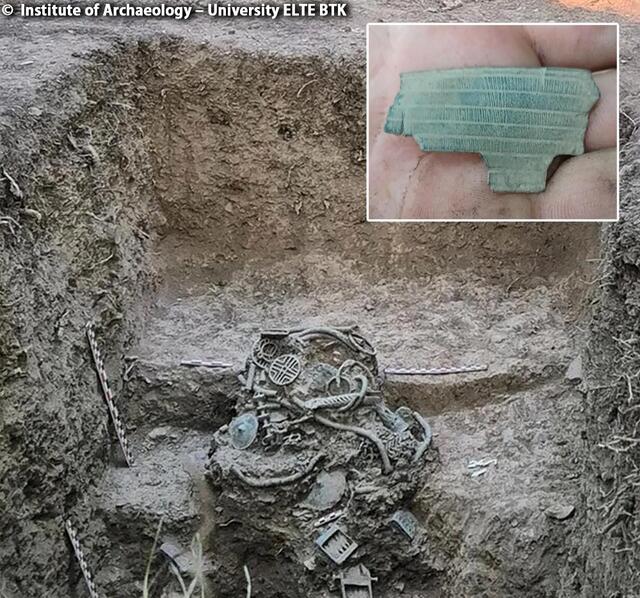High in the Bükk Mountains of northern Hungary, a fascinating chapter of the Iron Age has resurfaced. Archaeologists have uncovered an extraordinary hoard of bronze and iron artifacts in the besieged settlement of Dédestapolcsány-Verebce, a site that dates back 2,700 years. This discovery not only sheds light on the rich cultural exchanges of the Early Iron Age but also reveals the story of a brutal conflict that led to the settlement’s destruction.
The Settlement of Dédestapolcsány-Verebce
Situated on the mountaintop of Verebce-bérc in the Bükk Mountains, the settlement of Dédestapolcsány-Verebce was more than just a village—it was a fortified hillfort, strategically located to oversee the surrounding valleys. This elevated position was a hallmark of Iron Age communities, designed to offer protection and control over trade routes.
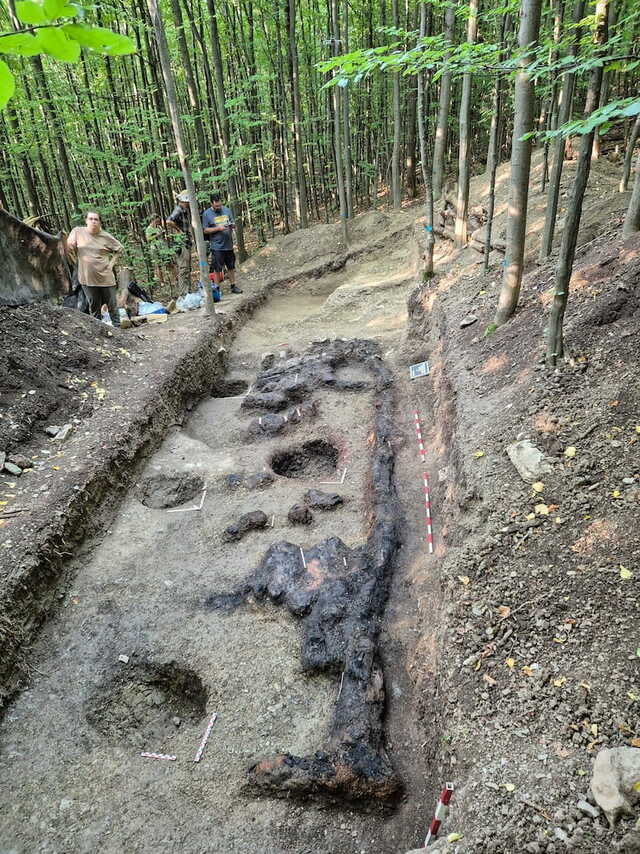
The settlement flourished during the Early Iron Age, thriving at the crossroads of major cultural influences from Central Europe, the Balkans, and the Pontic Steppe. Its strategic importance is evident not only in its location but also in the wealth of artifacts uncovered, which reflect a blend of local craftsmanship and foreign exchange. The site served as both a defensive stronghold and a cultural hub, highlighting the sophistication and adaptability of its inhabitants.
Evidence of Scythian Invasion
Around the 7th century BCE, the prosperity of Dédestapolcsány-Verebce came to an abrupt and violent end. Archaeological evidence points to a devastating attack by the Scythians, a nomadic people from the Pontic Steppe, whose territory corresponds to parts of present-day Ukraine and southern Russia. Known for their formidable warrior culture, the Scythians were masters of mounted combat and utilized advanced weaponry, including iron-tipped arrows and intricately designed bronze ornaments.
Excavations at the site reveal clear signs of this catastrophic event. Charred remains of structures, scattered artifacts, and hastily buried items paint a vivid picture of a settlement caught off guard. The defensive walls, though robust, were no match for the Scythians’ ferocity and strategic prowess. This invasion was likely part of a broader campaign to expand their influence into Central Europe, leaving a trail of destruction in its wake..

The 2,700-Year-Old Hoard
Among the most significant discoveries at the site is a hoard of bronze and iron artifacts, buried during the settlement’s final days. This collection includes tools, weapons, decorative items, and everyday objects, providing a comprehensive snapshot of life in the settlement before its destruction.
Key finds from the hoard include:
- Bronze ornaments and fibulae (ancient brooches): These intricately designed pieces showcase the high level of craftsmanship and aesthetic sensibilities of the settlement’s artisans.
- Iron tools and weapons: Items such as axes, knives, and spearheads reflect the community’s advanced metallurgical skills and its readiness to defend itself.
- Ceramic vessels and pottery fragments: These artifacts offer valuable insights into domestic life and trade networks, as some of the designs bear influences from neighboring cultures.
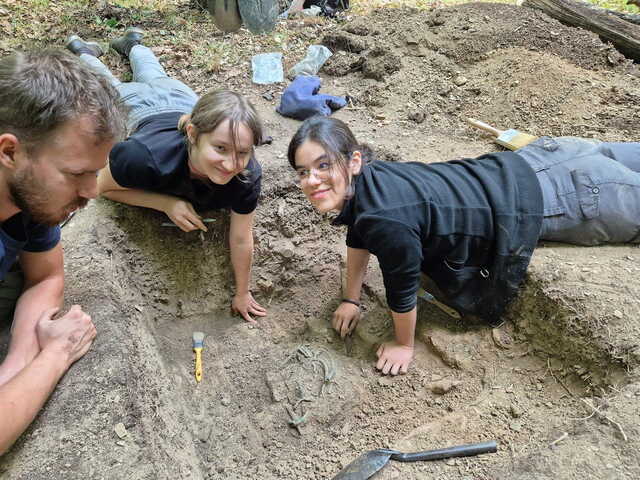
The hoard was likely buried in a desperate attempt to protect these valuables from the invading Scythians. However, the settlement’s rapid destruction meant that these items remained hidden for centuries, only to be unearthed during modern excavations.
Layers of History Beneath the Soil
One of the most fascinating aspects of the Dédestapolcsány-Verebce site is the evidence of continuous human habitation spanning several millennia. Beneath the Iron Age remains lie traces of earlier settlements, including those from the Bronze Age. These earlier structures, constructed with rough-hewn stones, suggest that the area had long been a center of human activity due to its strategic location and abundant natural resources.
In addition to the Iron Age and Bronze Age layers, archaeologists have uncovered remnants from later periods, including Roman-era artifacts and medieval structures. This stratified history reflects the site’s enduring significance and its ability to adapt to the changing cultural and political landscapes of the region.
Cultural Significance of the Find
The artifacts unearthed at Dédestapolcsány-Verebce provide a rare window into the interconnectedness of early European cultures. The mix of local and foreign influences evident in the hoard underscores the settlement’s role as a cultural and economic hub.
The craftsmanship of the bronze ornaments and the functionality of the iron tools highlight the technological advancements of the time. These artifacts also reflect the community’s ability to engage in long-distance trade, bringing in ideas, materials, and techniques from neighboring regions.
This discovery not only enhances our understanding of Iron Age societies but also emphasizes the resilience and creativity of these communities in the face of external threats and environmental challenges.
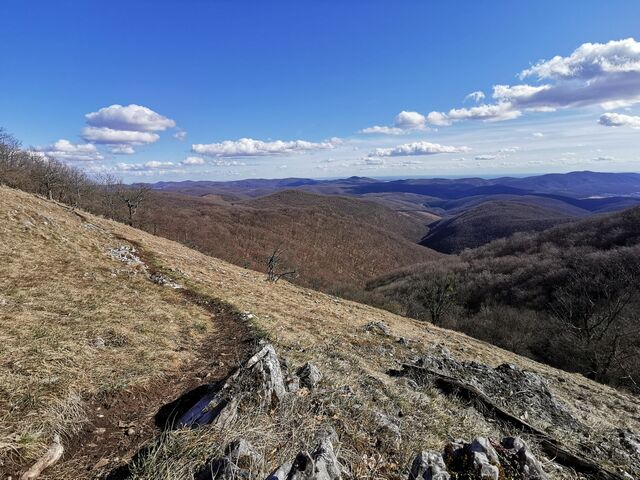
The Challenges of Excavation
Excavating a site of this magnitude is a complex undertaking. The mountainous terrain of the Bükk region posed logistical challenges for the archaeological team, requiring careful planning and resource management. Additionally, preserving delicate artifacts such as bronze ornaments and ceramics demanded meticulous excavation techniques.
Another challenge was piecing together the site’s history from layers of destruction and abandonment. By analyzing soil samples, artifact distributions, and structural remains, archaeologists were able to reconstruct the settlement’s rise and fall with remarkable detail.
The Legacy of the Iron Age in Hungary
The discovery of Dédestapolcsány-Verebce adds to a growing body of evidence highlighting the cultural and historical significance of Iron Age Hungary. During this period, the region was a vibrant hub of cultural exchange, influenced by both local traditions and external forces such as the Scythians.
These findings provide a deeper understanding of how ancient communities adapted to challenges, engaged in trade, and responded to external threats. The artifacts also reflect the resilience of these communities, whose cultural legacies continue to influence the region today.
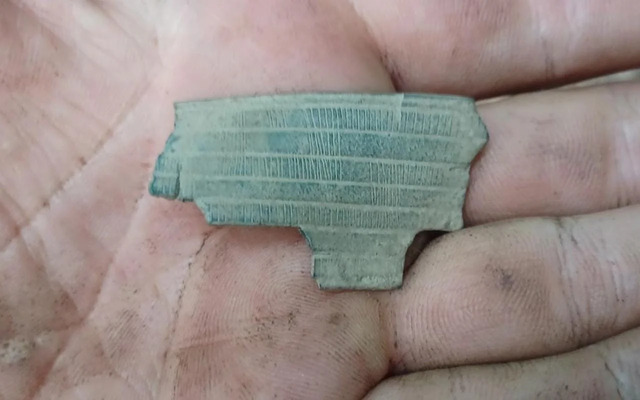
Looking Ahead: Preservation and Research
Efforts are underway to preserve the artifacts and the site itself. Researchers from the University of ELTE BTK in Hungary, along with international collaborators, are using advanced techniques such as 3D scanning and chemical analysis to study the artifacts in greater detail.
There is also potential for the site to become an open-air museum, allowing the public to explore its history firsthand. Such initiatives not only protect cultural heritage but also foster a greater appreciation for the richness of the region’s past.
Conclusion
The 2,700-year-old bronze and iron hoard found at Dédestapolcsány-Verebce is a testament to the resilience, creativity, and interconnectedness of Iron Age societies. From its commanding hilltop position to the treasures hidden beneath its soil, the site tells a story of innovation, conflict, and survival. As archaeologists continue to study these remarkable finds, they illuminate a past that remains relevant, reminding us of the enduring legacy of those who shaped the ancient world.
